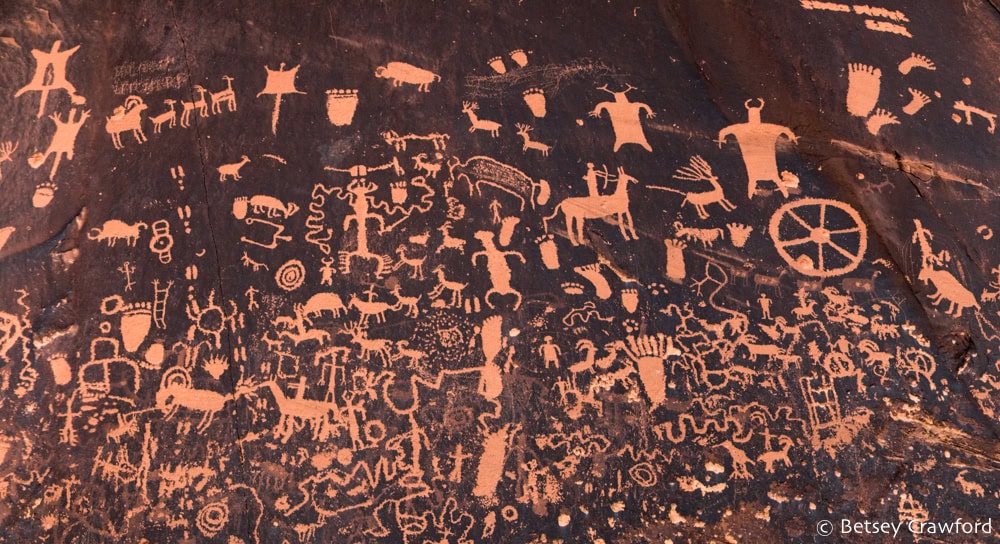
I’m still wandering the Utah desert with Moses. He’d be very used to this, but, though I love it, I’m positive I’d find forty years a few decades too many.
“Well, of course,” he would say, with the air of a man who has come to grips with doing what his god says. No matter how capricious, no matter what the cost. “I thought I was going out there for a few months.”
Presumably, when you’re leading your people out of slavery, decades of wandering in the desert isn’t as bad as it seems on paper. It’s not as if Moses were thinking, I could be a CEO earning $13,000 an hour if I didn’t have this stiff-necked tribe to deal with. Or this ornery God handing me stone tablets.
Options were few, and they were, after all, going to another dry and rocky place. The Aztecs wandered for 200 years before finding the sign to their promised land, which turned out to be a swamp. So there are a number of demanding gods out there.

We’re walking on a day when the sky is a blue so deep and incandescent that it could easily burst into flames at any moment. And then start raining stone tablets, as it apparently has been doing for eons. The tablets are everywhere.
They have our history written on them. It’s even color coded, if a bit disorganized in every other way, after being pushed and shoved by millions of years of geologic upheaval.
The great tales of long tribal wanderings speak of our slow evolution as a human race, and also as individuals. So many of us yearn for instructions to manage our lives in this often wild and inexplicable existence.
We have the most basic questions: Why? What? How? We long for clarity. We want stone tablets with the rules for living on them.
And here they are. They’re everywhere, not just in the Utah desert, though they’re more spectacular here than many places. They have the simplest of commandments.
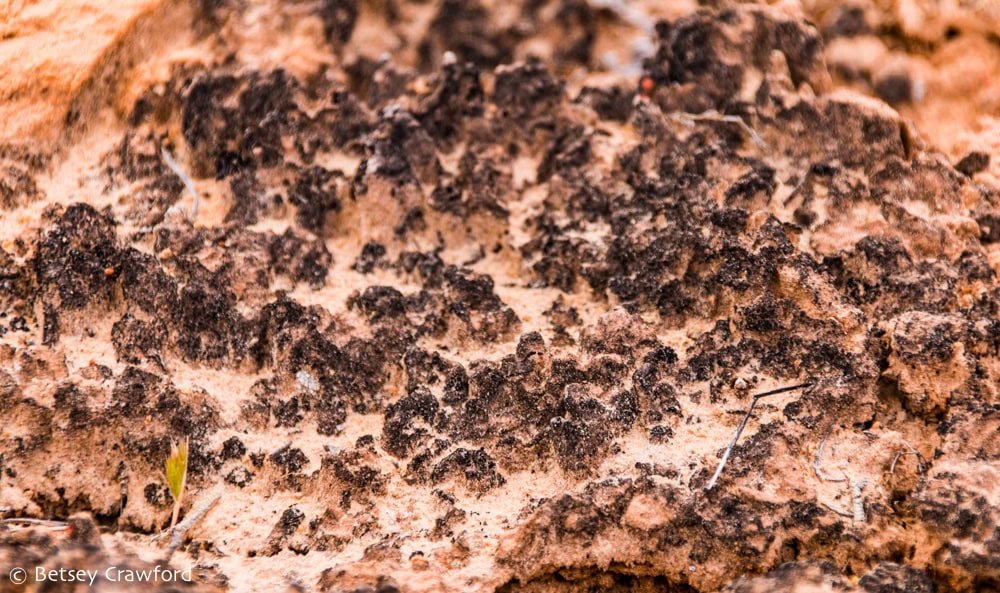
Tread lightly, they say. A biological crust covers the sandy soil to the side of the path. It’s made up of broken down moss, lichen, cyanobacteria, microfungi, and other microorganisms.
It prevents erosion, provides nutrients to sandy soil, holds water, enables rootlets to find secure footing. If I step on it in this dry environment, it won’t recover for 250 years.

Don’t waste. Here is a rock path where you can see no rock at all. It’s a beautiful lichen painting. The lichen is slowly detaching the bonds that hold the rock together. One facet of the complex, millions-of-years-long process that creates the living soil our planet depends on. Dirt is not cheap.

Except for a few hours a year, washes and streams are dry expanses of tumbled rock. Respect limits, the tablets say. If you put golf courses, shopping centers, and houses in the desert, one day you will run out of water.
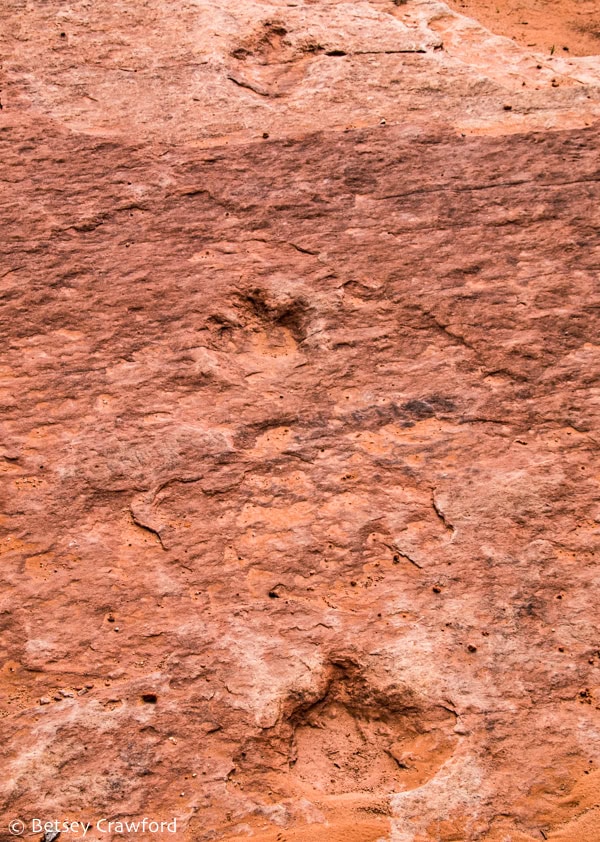
Be humble. A three-toed dinosaur walked through this mud-turned-stone 150,000,000 years ago. They were the big shots of their day.
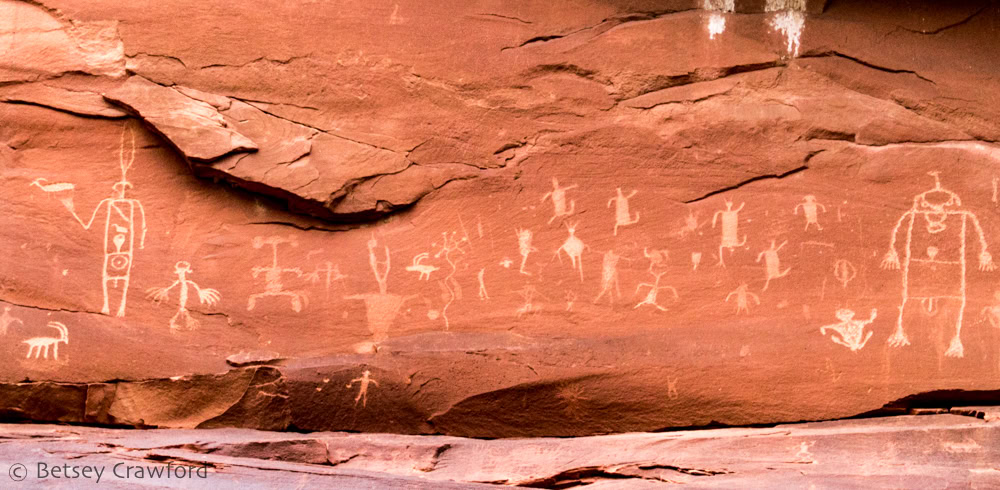
Make art. Celebrate life.
Don’t use too much, take care of all breathing things, sustain all the non-breathing things we depend on. We think it’s complicated, but it’s not.
We make it complicated by what, to me, are two of the most damaging legacies of the Old Testament. The idea that certain people are chosen, and that humans have been given dominion over the earth. These ideas weren’t new to the Israelites, but the bible helped codify them.
The stones surrounding me hold the history of the cosmos. As do I, as does my dog, Splash, patiently sitting in the shade while I take pictures of wildflowers. In the first moments of the big bang, every particle that will ever exist in our universe was already created.
They proceeded to meld and blend and be forged in the three-billion-degree heat of the earliest stars. Eventually, they formed the elements that make up this rock, that course through my veins, that hold up the stem of the flower.
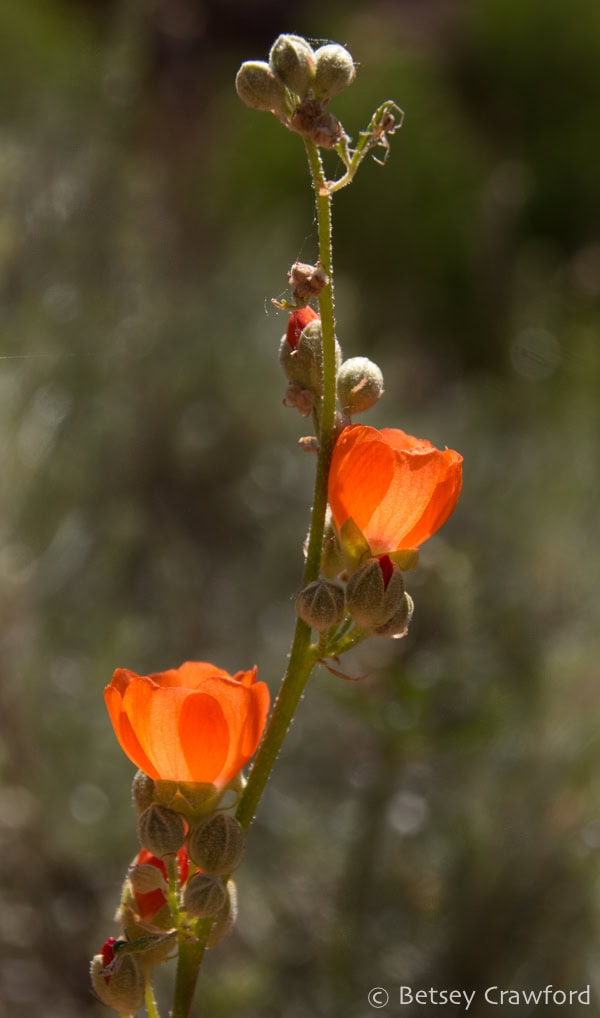
Whatever we call the force that exploded every bit of us into being, we are ongoing manifestations of it. The same energy, expressed differently. Now a rock face 200,000,000 years old. A woman of sixty-four and a dog of fourteen. A days-old flower glowing orange against the rocks.
This means we are made of exactly the same particles as everything else. Thinking about this miraculous, inherent relatedness, it’s harder to feel superior because we have iPhones, Starbucks, jets, guns.
Our path of evolution has given us the ability to reflect on our connection to everything in the cosmos. Instead, we use it to fight over literal surface differences. We have made our form of consciousness a god. We’ve created a covenant with that god, to choose us over all other forms on the earth.
It’s not sustainable, and we all know it. Perhaps not in our vaunted consciousness. But our earthy bodies know we are part of the dirt, the plants, the stars, each other. Bodies that long for reconnection, that know separation is death. We, too, are tablets with the instructions we long for.
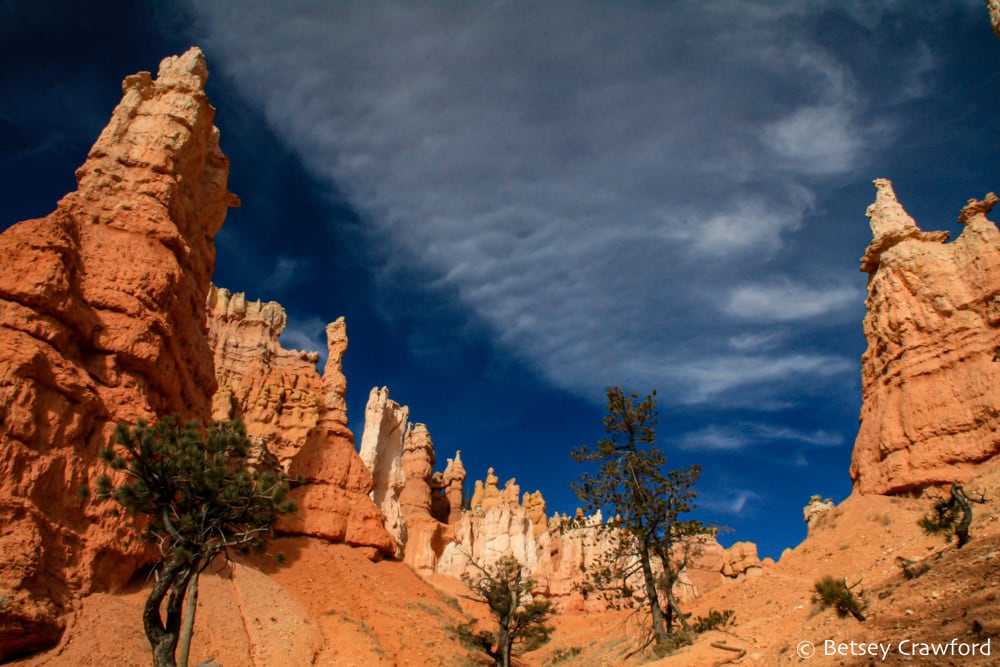
~ RELATED POSTS ~

THE INTIMATE BOND: HUMANS AND DIRT
Although dirt is one of the most crucial — and threatened — systems on our planet, it doesn’t have a reputation for excitement. Until we see our bare feet standing on dirt and realize we are looking at different aspects of the same cosmic elements.
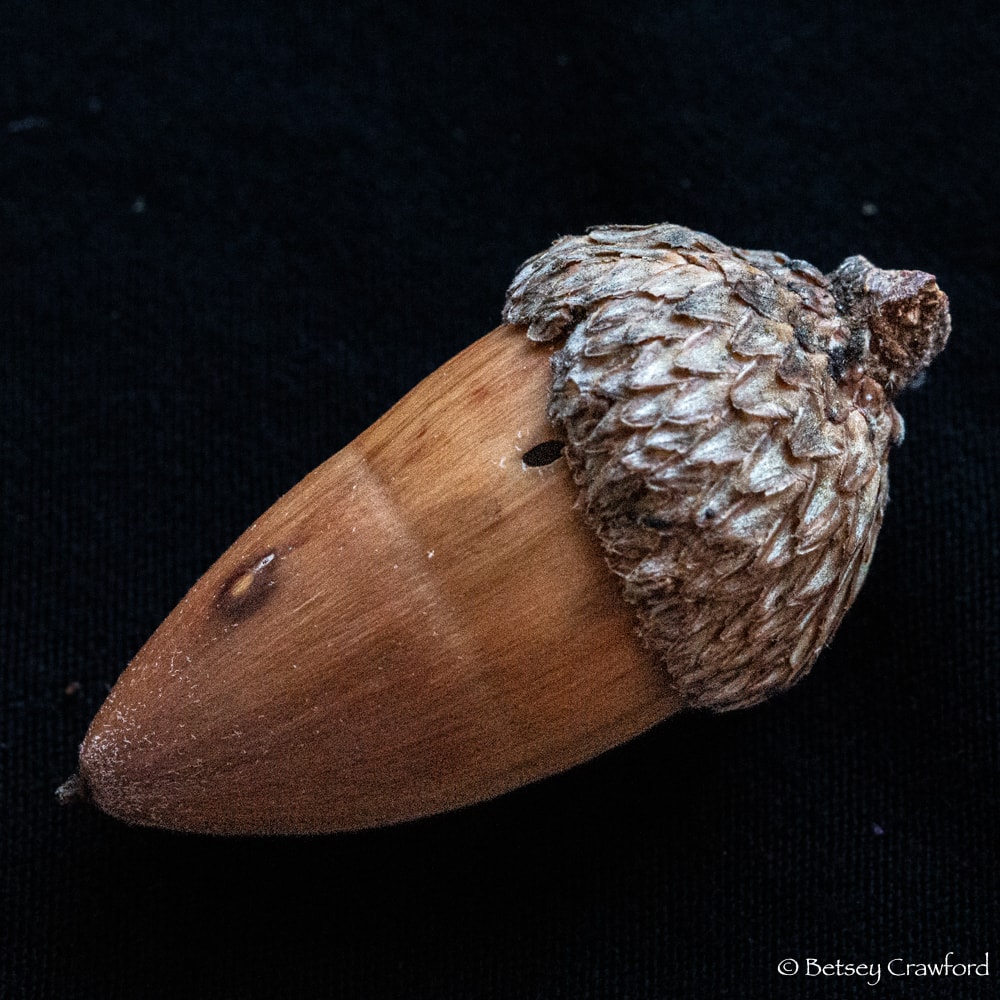
Thomas Berry’s thinking has informed and enriched my own beyond measure. I chose my favorite of his ideas: that we expand our vision beyond treasured texts to include Earth herself as our primary revelation. I spend a lot of time doing just that, so it’s a perfect fit.

One of the earliest — and among the most personal — of my essays, about the uncanny ways the desert brings us to herself to reveal ourselves.
“We have made our form of consciousness a god and have created a covenant with that god…” That really struck me. How arrogant we are! But the Universe gave us even that arrogance, maybe so our eventually seeing our own folly would let us recognize even more profoundly the unsurpassable Grace that has created EVERYTHING…
MLAA
What a lovely and optimistic idea! Love it.
Hi! I found you through Deep Time Journey Network. Thank you for sharing these beautiful thoughts and images. I have spent much time in those same parts of Utah – and I’m always amazed.
Thanks so much, Mandi. Isn’t it the most incredible landscape? I can’t seem to get enough of it. So glad you’re here through the Deep Time Network. Jennifer is a force!
OMG ! You never cease to amaze. Moses would have loved hanging out with you. You illuminate so lusciously the path we all tread and our cell phones fall silent in awe. How easy to forget our connection to the land and to each other. You remind us of our common ancestry. Bless you!
Thank you so much for this, Walter. I suspect Moses had enough on his hands without my saying ‘Don’t step there! It won’t recover for centuries!’ But I love the idea. Blessings to you, too.
So beautiful Betsey!
You make my heart sing.
Thank you!
Thank you, Ellen. What a lovely comment!
Thank you for the breathtakingly beautiful pointings to who we are as our true Self. My consciousness expands with each reading.